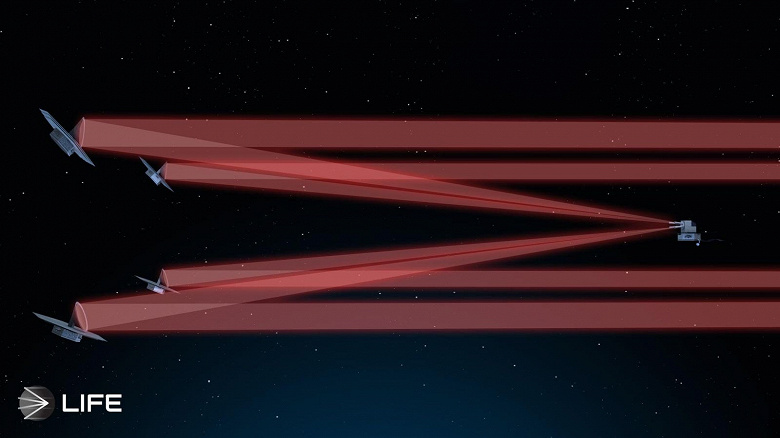LIFE team explores potential metabolic processes on exoplanets through simulations of processes on Earth
The space project LIFE (Large Interferometer for Exoplanets) opens up new perspectives for studying life in the Universe. This is an ambitious project that involves creating a space telescope with four mirrors that can be moved and varied their distance from each other, similar to the radio antennas in the Very Large Array (VLA).
LIFE is currently in the early stages of planning and its construction will take considerable time, but the team at this telescope is already actively exploring the possibility of detecting life on exoplanets, in particular by searching for biogenic molecules in the atmospheres of these potentially habitable planets.
Preliminary research by a team of scientists is looking at how our solar system might look if viewed as an exoplanet system. The team ran simulations assuming that alien civilizations 10 parsecs away (approximately 32 light years) would be able to observe our solar system using a telescope similar to LIFE. Such observations will allow alien astronomers to visually study Venus, Earth and Mars. In addition, thanks to a special process — Phase Synthesis Space Decomposition (PSSD), LIFE will be able to detect the main molecules in the atmospheres of these planets, such as water and carbon dioxide.
However, the presence of these molecules in the atmospheres of exoplanets may be associated not only with the presence of life, but also with geochemical processes. To have more convincing evidence of life, it is necessary to discover more complex biological molecules that cannot be formed by geological processes.
The new study examined three such molecules: nitric oxide (N2O), chloromethane (CH3Cl) and bromomethane (CH3Br). These molecules are produced by biological activity in Earth's oceans, and therefore their presence in the atmospheres of exoplanets may indicate the presence of life. According to the simulation, LIFE will be able to detect these molecules in the atmospheres of exoplanets located at a distance of no more than 5 parsecs from our planet — that is, within a relatively close distance. Systems closer to our solar system, such as Proxima Centauri, which is only 4 light-years from Earth, could be observed by LIFE for several days. However, in the case of more distant systems, such as TRAPPIST-1, which is 40 light-years away, LIFE will take considerable time to achieve results.
The LIFE project is currently under review by the ESA. However, there are other projects dedicated to the search for life in space. In any case, such studies require time and effort to be approved and implemented. But ongoing research and search for life on exoplanets continues, and we can expect promising results in this field in the future.

